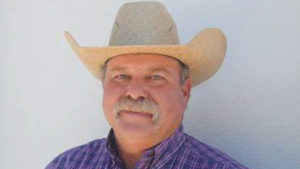
Between now and mid-October is the ideal time to fertilize your landscape this fall.
Fertilizing your lawn is not really a “one size fits all” thing. Remember that the health of your turfgrass is heavily dependent on the soil it is being grown on. The ideal way to fertilize your lawn is to start with a soil test to get information on the characteristics of your soil such as soil Ph, soil salinity and the relative abundance of the major nutrients your turfgrass needs to survive. Nitrogen, phosphorous and potassium (N-P-K) are the three primary macro-nutrients that are available in most fertilizer blends. The analysis or grade on the fertilizer bag indicates the amount of each nutrient and the ratio (N, P, K). So, a product with a grade of 15-5-10 has a 3-1-2 ratio of these nutrients. For most fertilizer applications in our area a 3-1-1 or 3-1-2 ratio is recommended for lawns.
It is possible to apply fertilizers at the wrong time of year. Nitrogen should be applied only during months when the turfgrass is actively growing. As a guide, use the first and last frost dates. Your first fertilizer application of the year should be applied 4-6 weeks after the last frost date in the spring or once the grass has been mowed at least twice. For our area, the average last frost in the spring is March 15th or so. Your last fertilizer application should go out 4-6 weeks before your first frost date in the fall. Our average first frost is around November 15th so the fall fertilizer application should be made in late September – early October. This will minimize winter injury to turfgrass and disease risk.
Most folks apply too much fertilizer per application. 1lb of actual nitrogen per 1,000 sq ft of lawn is the recommended rate of application. If you have one 50lb bag of 15-5-5 fertilizer, there is 7.5lbs of actual nitrogen in the bag. So that one bag of 15-5-5 will cover 7500 sq ft of lawn if applied correctly. Always water in the fertilizer to avoid fertilizer burn to your turfgrass.
If you have trees/shrubs present it is not recommended to use a weed-and-feed all in one product which contains a re-emergent herbicide and nitrogen fertilizer.
For more information on soil testing visit the Texas A&M Soil, Water, and Forage testing laboratory website: soiltesting.tamu.edu.
***
2023 National Economic Impact Study for the Equine Industry Kicks Off
WASHINGTON, D.C. – The last three years have been a time of great change throughout the country for homes, businesses and industries. Rising costs of living, shrinking of assistance and changes in demographics have affected so much of our world, and that includes the equine industry.
However, not all of the changes are easy to identify. Which is why the American Horse Council (AHC) is kicking off what could be one of the biggest studies in its more than 50 years with the 2023 National Economic Impact Study.
Major economic changes have occurred during the past five years. Not only have business closures and resulting federal stimulus programs related to the pandemic made a major impact, but the horse industry has adapted to historic changes made to the tax code since 2017.
An economic impact study examines the effect of an event or industry has on the economy and usually measures changes in business revenue, business profits, personal wages, and/or jobs.
As a large, economically diverse industry, the United States horse industry contributes significantly to the American economy.
The purpose of the census is to demonstrate the value of the equine industry in the national and state economies by analyzing the direct, indirect, and induced economic impacts of horse ownership, recreation, and equine-related services.
Over the course of its 50-plus year history, the AHC has conducted numerous national economic impact studies for the U.S. horse industry, which has included such pivotal years as 1987, 1997, 2007 and, the most recent study, 2017. “The challenges of the last few years with the pandemic and its economic impacts on all aspects of our industry make the 2023 study all that more important and necessary,” states Dr. Rick Mitchell, Chairman of the AHC Board.
Data collected will inform public and private investments in equine-related businesses, equine health care, education, land use decisions, tax policy, tourism, employment incentives, etc.
New this year are sponsored incentives for individuals and groups who participate in the survey, including a John Deere Z545R ZTrak Mower valued at $7500, one year of Nutrena feed for one horse (a $2,000 value); one year of Purina feed for one horse (a $500 value/horse); gift certificates from Trafalgar Square Books (total value $180); enrollment in Texas A&M AgriLife Equine Reproductive Management Online Course valued at $300/enrollment; plus more.
“The Economic Impact Study is the most effective tool in our advocacy quiver,” says Julie
Broadway, president of the AHC. “When the industry needs to take aim at an issue, this data is invaluable in helping us paint the picture of the contributions the industry makes and the breath & depth of its composition.”
More information and the 2023 Economic Impact Study can be found on the AHC website: https://horsecouncil.org/economic-impact-study/
If you have questions, contact American Horse Council President Julie Broadway at [email protected]
-30-
About the American Horse Council
As the national association representing all segments of the horse industry in Washington, D.C., the American Horse Council works daily to represent equine interests and opportunities.